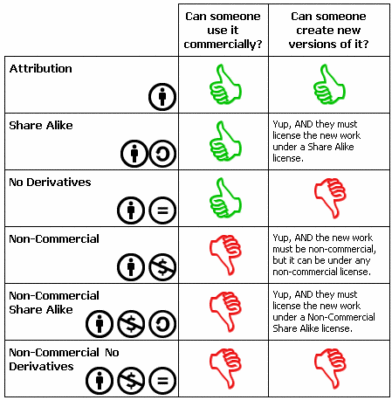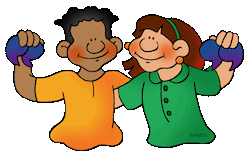Copyright guidelines
Copyright refers to laws surrounding the protection of creators and users of original works. The purpose of this legislation is to:
- protect intellectual property (including the right to copy it),
- leverage new ideas,
- spread existing knowledge, and
- promote creativity and innovation.
Even if a work is not marked with a ©, it is still under copyright protection. (Columbia University)
Generally, creators may choose how their work is displayed, shared, and used. However, there are some exceptions to copyright protections:
- Under certain circumstances, “Fair Use” of original works ensures intellectual freedom and allows users to build on previous knowledge.
- After the copyright period expires or if the rights have been waived, original works fall into the “Public Domain” and can be used without any restrictions.
Exactly what constitutes Fair Use depends on the geographical location of the creator and the user, is subject to interpretation, is in a constant state of change, and varies from country to country (SURF). Copyright laws are very complex and confusing!
When using original content, it is the responsibility of the user to determine whether the criteria for copyright exception have been met. Users must think critically to determine what constitutes Fair Use (or Private Use). It may help to think in terms of these four areas:
- Purpose: What am I using this work for?
- Nature: Is the work highly original, or common knowledge?
- Amount: Am I using a small quantity, or a large portion of this work?
- Effect: Would my use of this work impact its value? (Columbia University Checklist)
For more details, download the copyright checklist.
In Switzerland, Fair Use is referred to as ‘Private Use.’ The Swiss Federal Act on Copyright and Related Rights of October 9, 1992, Art. 19.1 identifies exceptions to copyright protections for Private Use, which include:
- “personal use of a work or use within…friends or relatives,”
- “use of a work by a teacher and his class for educational purposes,” and
- “the copying of a work in enterprises…for internal information or documentation.”
Some creators are happy for their works to be used by others. Creative Commons Licenses let users know how original works may be used. (See the video on this page.) The symbols below indicate the permitted uses of the work:

Source: Burrough, Xtine and Michael Mandiberg. “Do Your CC Homework,” MasterNewMedia, 3 Apr. 2009, www.masternewmedia.org/how-to-publish-a-book-under-a-creative-commons-license/. Accessed 19 Mar. 2020.
Even in Fair Use of original works, be sure to cite your source! (see Citing Sources)
Columbia University Copyright Advisory Services. “Fair Use Checklist” [pdf], Columbia University Libraries, 18 Mar. 2020, www.copyright.columbia.edu/basics/fair-use/fair-use-checklist.html. Accessed 18 Mar. 2020.
Columbia University Copyright Advisory Services. “Copyright Basics,” Columbia University Libraries, 18 Mar. 2020, www.copyright.columbia.edu/basics.html. Accessed 18 Mar. 2020.
Common Sense Education. “Copyright and Fair Use Animation,” YouTube, 5 Sep. 2014, www.youtu.be/suMza6Q8J08. Accessed 24 Mar. 2020.
Federal Assembly of the Swiss Confederation. “Federal Act of 9 Oct. 1992 on Copyright and Related Rights (Copyright Act, CopA),” 1 Jan. 2017, The Federal Council, www.admin.ch/opc/en/classified-compilation/19920251/index.html. Accessed 18 Mar. 2020.
Opinion Stage, “Free to use or share” [quiz images], Opinion Stage, https://www.opinionstage.com/dashboard/quizzes/633469/edit. Accessed 24 Mar. 2020.
SURF. “Fair use and fair dealing in foreign countries,” www.ccarts.ca/wp-content/uploads/2011/07/FairUseandFairDealinginForeignCountries.pdf. Accessed 18 Mar. 2020.
U of G Library. “What are Creative Commons Licenses?” YouTube, 21 Sep. 2018, www.youtu.be/srVPLrmlBJY. Accessed 24 Mar. 2020.
Copyright quiz
Try answering the questions below to test your knowledge about copyright.
Videos
Copyright checklist
Download this copyright checklist to help you determine the Fair Use of an original work.
Copyright guide for teachers
Teachers can download this chart with Copyright and Fair Use Guidelines for Teachers. (These guidelines refer to US copyright laws. Legislation varies slightly from country to country, but basic concepts are similar.)
Free content
Always check the copyright or the CC (Creative Commons license) permissions when using content from the web. And remember to cite your sources.


Get Social